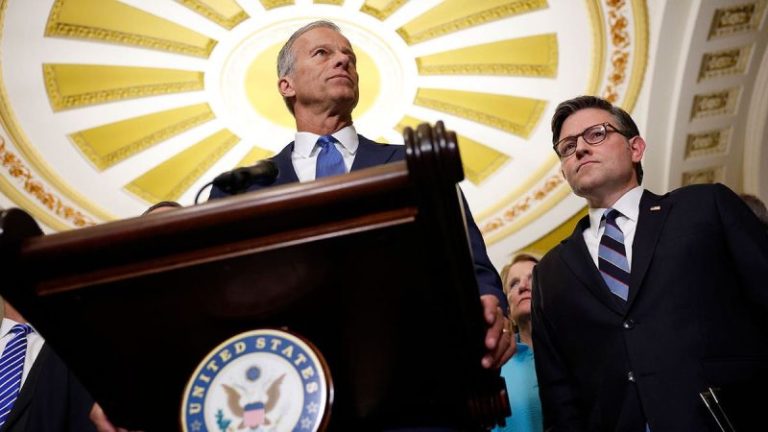In his iconic dissent in Morrison v. Olson (1988), the late, great Supreme Court Justice Antonin Scalia brilliantly articulated why the Independent Counsel Statute unconstitutionally intruded upon the Executive Branch. This dissent laid the groundwork for the Supreme Court’s current constitutionalist majority to restore sanity to separation-of-powers jurisprudence by returning power to its rightful place: the Executive Branch, all of whose power is vested in the President of the United States who is elected by all Americans.
Leftists and other anti-democratic big-government types call this view the ‘unitary executive theory.’ In reality, it is just Article II of the United States Constitution. We The People loan executive power to our duly-elected President; we do not divvy it up among unelected, leftist federal bureaucrats. Scalia’s most famous line in the Morrison dissent was his characterization of the statute as ‘a wolf in wolf’s clothing,’ a play on the idiom of ‘a wolf in sheep’s clothing.’ Scalia was illustrating how the violation of the separation of powers was unambiguous.
Former U.S. District Judge Mark Wolf of Massachusetts is another wolf in wolf’s clothing, despite his effort–aided by the leftist media–to package himself otherwise. Wolf was appointed to the bench by President Reagan in 1985, but he is no judicial conservative. Wolf received the stamp of approval from the most leftist home-state duo in Senate history: Ted Kennedy and John Kerry. The reason the approval of these radical senators was necessary lies in a century-old Senate tradition called the blue slip. Home-state senators can veto nominations of U.S. district judges, U.S. attorneys, and U.S. marshals. Nominees will not move forward without the return of blue slips from both home-state senators. Senators will not relinquish this extraordinary power because they are power-hungry and self-serving. They want to hand-select the federal prosecutor who could indict them, the federal judge who could try them, and the federal marshal who could escort them to prison.
Recently, Wolf resigned from his lifetime appointment. He had assumed senior status (a form of semi-retirement) during the Obama administration, allowing Obama—instead of the next Republican president–to appoint a leftist to replace Wolf in full-time judicial service. According to Wolf, President Trump has disregarded the rule of law in innumerable ways. Wolf wants to speak out about it and serve as a self-appointed spokesman for sitting judges who cannot. Wolf also has blasted the Supreme Court, claiming that the constitutionalist majority has enabled President Trump. Wolf has whined the Court has ruled 17 out of 20 times in the Trump administration’s favor on its emergency docket. Wolf has compared this success rate to that of players like Barry Bonds, Mark McGuire, and Sammy Sosa during Major League Baseball’s steroid era.
Wolf’s claim is absurd. The administration has succeeded so much at the Supreme Court thanks to its stellar team of legal all-stars, headed by Attorney General Pam Bondi and Solicitor General John Sauer. Many other brilliant attorneys also deserve credit for the administration’s sterling Supreme Court performance.
Moreover, the rulings by Wolf’s fellow activist judges are clearly partisan and lawless. How many cases does Wolf think the administration should have won before the Court? Eight out of 20? Ten? Twelve? His statistical conspiracy gibberish is devoid of even a scintilla of legal analysis. Wolf is only interested in peddling nonsense to bash justices he plainly detests. Wolf also conveniently ignores the other side of the statistical coin. According to analysis from former top Senate counsel Michael Fragoso, district judges in Massachusetts ruled against the Trump administration on 27 out of 29 temporary restraining orders and preliminary injunctions. Wolf apparently has no issue with this disparity; rather, he seems to view these rulings as coming from beacons of judicial integrity.
Wolf has a history of conspiracy hogwash. For over a decade, he pursued a baseless case against Supreme Court Justice Clarence Thomas, history’s greatest justice. According to Wolf, Thomas had wilfully failed to make required disclosures. The Judicial Conference categorically rejected Wolf’s theory. Yet, over a decade after the case had been closed, Wolf testified before a Senate Judiciary Committee subcommittee chaired by U.S. Senator Sheldon Whitehouse of Rhode Island, another partisan and deranged conspiracy theorist. During one exchange, Wolf told a U.S. senator that former Reagan Solicitor General Rex Lee would have been disturbed by, as Wolf saw it, unethical behavior of Thomas. That senator was Mike Lee of Utah, and Solicitor General Lee was his deceased father. Sen. Lee rightfully erupted at Wolf’s despicable statement.
Sitting judges cannot speak out against President Trump according to the Code of Conduct for United States Judges. They cannot use Wolf as their mouthpiece, either. The House and Senate Judiciary Committees need to subpoena Wolf to determine which judges are trashing President Trump through Wolf. If Wolf refuses to divulge the information, he should face contempt of Congress charges just like Trump allies Steve Bannon and Peter Navarro did.
If the identities of judges who speak through Wolf to bash President Trump become public, every one of those judges must face impeachment proceedings. No matter how difficult conviction by a two-thirds Senate supermajority will be, these rogue judges must suffer through the impeachment process to deter them and other judicial embarrassments from engaging in blatantly unethical behavior. These radical judges are illegally and dangerously subverting the will of American voters.
Wolf is a Sheldon Whitehouse, not a Ronald Reagan. Wolf plans to serve as the vehicle by which sitting judges can attempt to circumvent ethical constraints. He has spouted risible conspiracy tripe to denigrate the Supreme Court in general and Thomas in particular. He even has stooped to the all-time low of bringing up a senator’s deceased father in a pathetic attempt to score a few cheap political points. In short, Wolf is a disgrace to the federal judiciary, and his resignation is welcome news. Good riddance to this wolf in wolf’s clothing.










